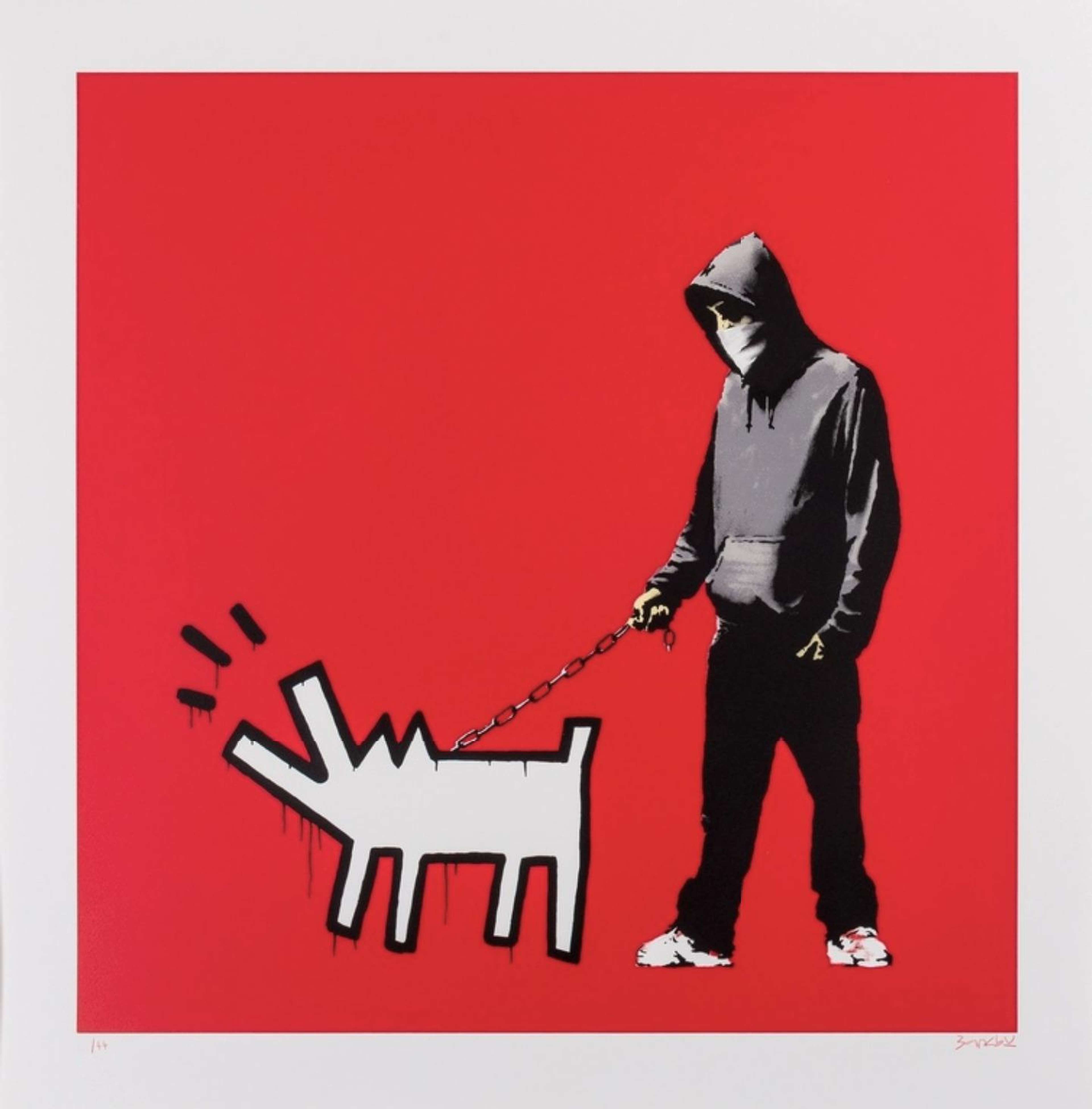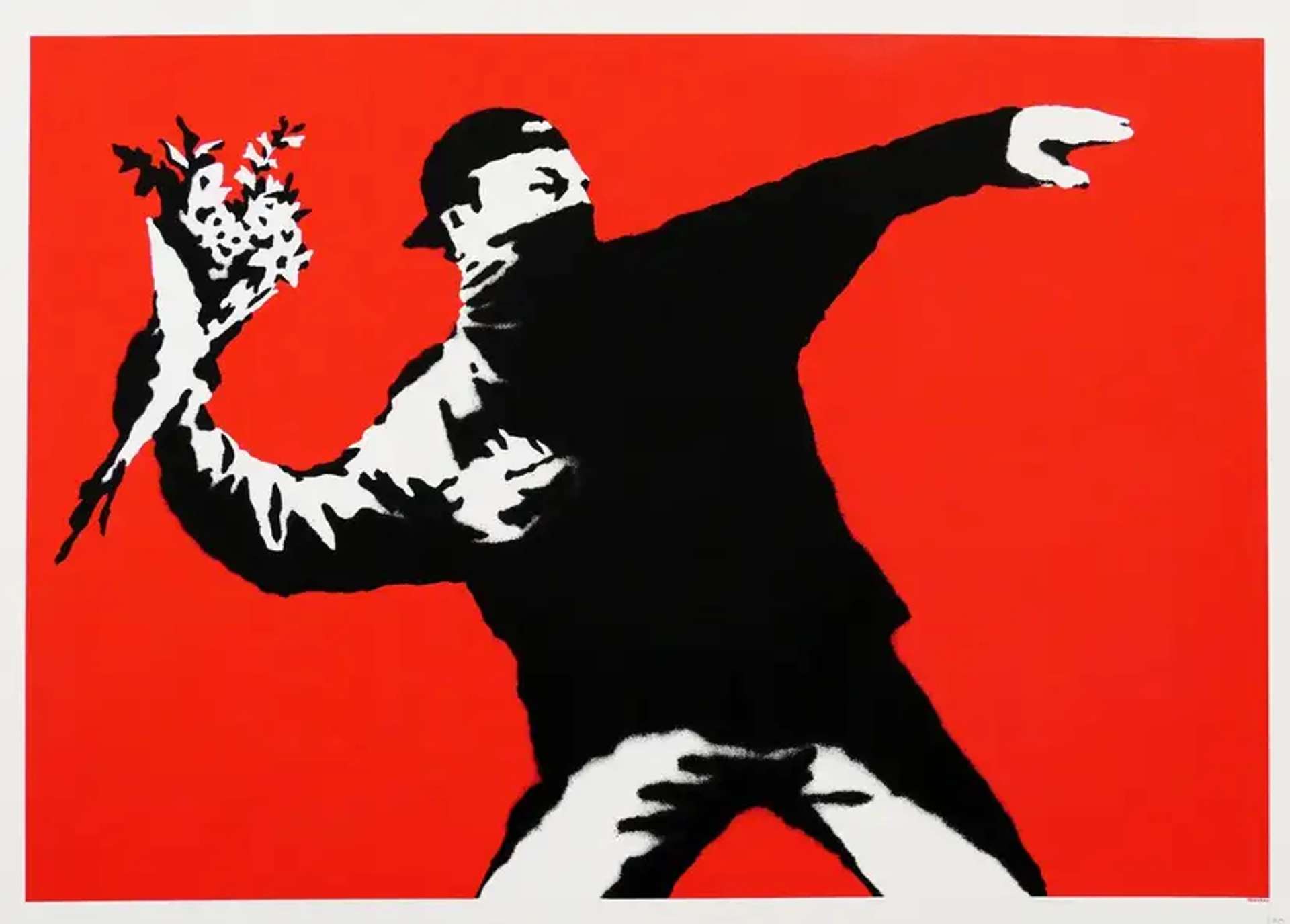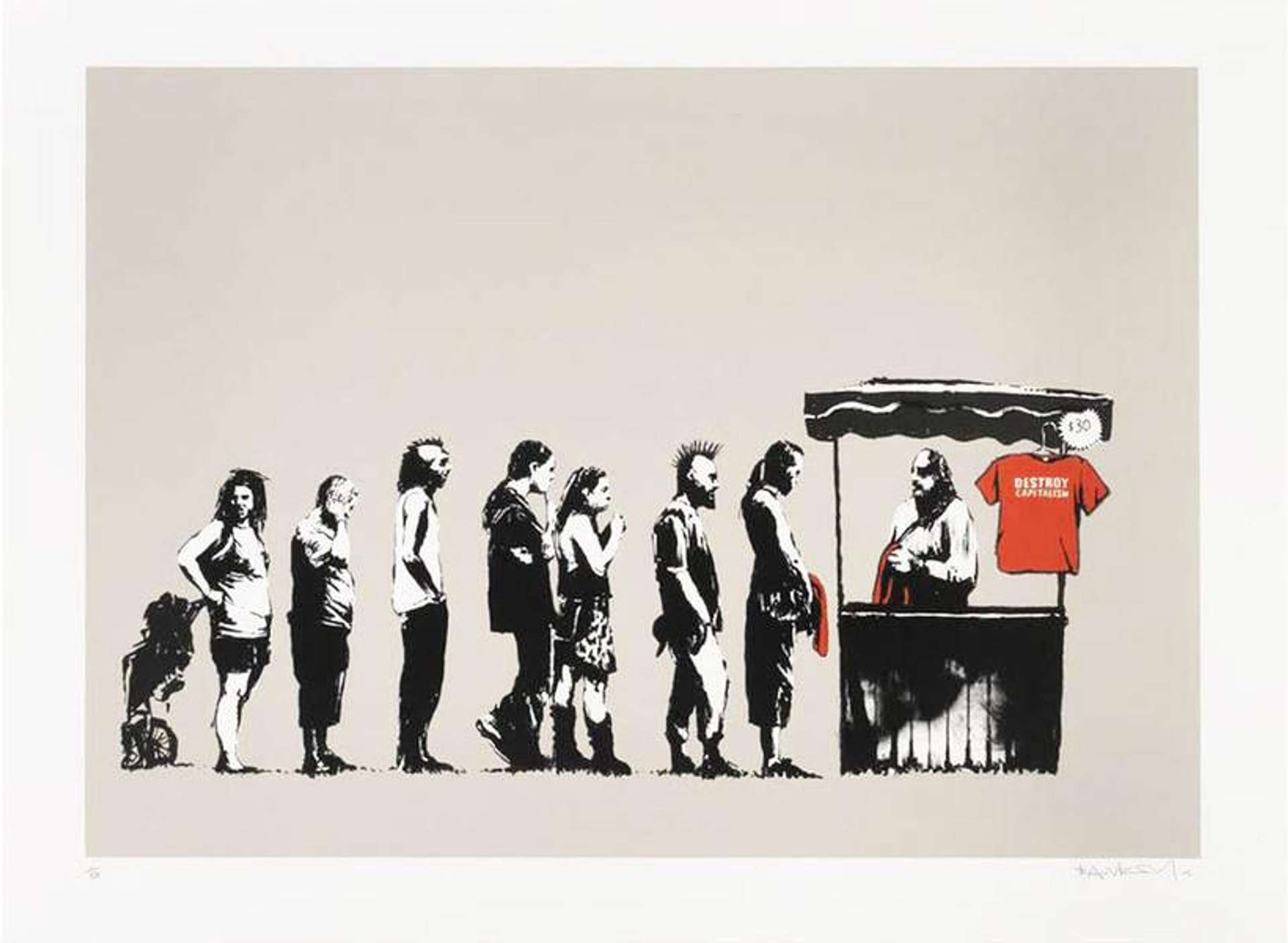The Master of Stunts: How Banksy Became the PR Prodigy of Contemporary Art

 Banksy: 5 Years Of His Best Stunts © MyArtBroker
Banksy: 5 Years Of His Best Stunts © MyArtBroker
Banksy
269 works
In our time, few artists have managed to create as much intrigue and admiration as Banksy. While the artist's identity remains shrouded in mystery, one thing is unequivocally clear: Banksy is not just a master of his mediums, but also of public relations and self-promotion. His audacious stunts – from self-shredding paintings at auction houses to impromptu theme parks like Dismaland – consistently capture global headlines and stir fervent discussions within the art world and beyond. Apart from just a visual spectacle, his meticulously orchestrated performances blur the lines between art and satire, creating a media frenzy that only adds to his appeal. It's this genius for blending guerrilla art tactics with PR masterstrokes that makes Banksy a singular sensation, using shock and awe to both criticise and conquer the contemporary art world.
 Banksy: 5 Years Of His Best Stunts © MyArtBroker
Banksy: 5 Years Of His Best Stunts © MyArtBrokerLove Is In The Bin, October 2018
Love Is In The Bin is one of the most infamous stunts in art history, perfectly illustrating the artist's knack for blurring the boundaries between art, spectacle and social commentary. This is the performance that most people, art enthusiasts or not, have come to associate with Banksy.
On October 5th 2018, during an auction at Sotheby's in London, his iconic artwork Girl With Balloon was sold for a little over £1 million. Just as the hammer went down to mark the sale, much to the astonishment of onlookers, the artwork began to self-destruct while a loud alarm went off. A remotely activated shredder – ingeniously concealed within the frame – partially shredded the canvas, leaving half of it dangling in strips below the intact upper portion. Banksy has stated he first installed the mechanism back in 2006 in case it ever came to auction, and that the artwork was originally supposed to entirely self-destruct, but the mechanism failed.
This unexpected live act of performance art turned the artwork into an instant media sensation. The self-destruction of the work was seen by many as a satirical jab at the art world, critiquing its commercialism and commodification. Far from diminishing the artwork's value, the shredding increased it. The buyer went through with the purchase, and the newly transformed work was given a new title: Love is in the Bin. Today, it is considered an iconic piece of performance art in its own right. Three years later, the original buyer put it up for sale once again at Sotheby's, where it broke a record for a Banksy artwork and sold for £18,582,000 – more than triple its high estimate.
The moment was a watershed in his career. In true Banksy fashion, Love is in the Bin served multiple purposes: it was a work of art, a daring performance, a PR stunt, and a sharp critique on the art industry's dynamic. This event underscored Banksy's unparalleled ability to merge art with public relations, creating ripples of discussion and reflection across the globe.
Banksy at the Venice Biennale, May 2019
During the 2019 Venice Biennale, one of the art world's most prestigious events, Banksy made an unannounced and unofficial appearance in his typical irreverent fashion.
Setting up a street vendor-style stall, Banksy displayed a series of nine artworks that together created an expansive image of a massive cruise ship looming over Venice's historic buildings, juxtaposing it with the small, iconic gondolas that traditionally grace the city's canals. The piece highlighted the overwhelming and controversial presence of large cruise ships in Venice, pointing towards the environmental and cultural impact these ships have on the delicate sinking city. As the day went on, local authorities asked the mysterious vendor – presumably Banksy himself – to move on, unaware of the identity of the artist or the value of his art.
This stunt further reiterated Banksy's flair for guerrilla artistry and his continuous drive to bring attention to societal and environmental issues. By choosing the Venice Biennale as his stage, Banksy ensured that his message reached an audience of art enthusiasts, critics, and global media, once again demonstrating his adeptness at weaving his art, commentary, and self-promotion into a singular, impactful act. Furthermore, by setting himself up as a "regular" artist selling his works on the street, he begged the art world to ponder the question of what differentiates those artists from the ones exhibiting at the Biennale, and who makes the decision of what is considered "good art".
Stormzy stab vest at Glastonbury, June 2019
At the world-famous Glastonbury Festival, British grime artist Stormzy made headlines for the politically charged stab vest he wore during his performance. This was no ordinary attire, as it was designed by none other than Banksy himself.
The black stab-proof vest was adorned with a monochromatic Union Jack, its design was simple yet powerful – drawing attention to the rise of knife crime in the UK and especially in London. By wearing it at Glastonbury, Stormzy sent out a poignant message about the state of the nation, touching upon themes of race, class and the urban experience in Britain. On his Instagram, Banksy said: "Who knew moving into gents tailoring could be this much fun? A vest that’s capable of stopping bullets up to .45 calibre."
The collaboration between Banksy and Stormzy was emblematic of the intersection of art, music and political commentary. It showcased how both artists, in their respective mediums, seek to shed light on pressing societal issues and bring them to the forefront of the cultural landscape, especially among younger generations. The vest's appearance at such a high-profile event further cemented Banksy's reputation for infusing his art with timely and thought-provoking narratives. The vest was not just a piece of wearable art but also a symbol of resistance, solidarity and awareness in contemporary Britain.
Gross Domestic Product, October 2019
In October 2019, on the heels of the then-record breaking sale of Devolved Parliament for £9.9 million, Banksy announced his opening of a storefront named Gross Domestic Product in Croydon, South London. In true Banksy fashion, this was not your typical retail endeavour: the store itself was never actually open to the public for physical shopping; instead, it was an art installation. The items were displayed in the shop window for pedestrians to view, while purchases could only be made online via the Gross Domestic Product website. Customers were only accepted after thorough vetting by comedian Adam Bloom after answering the question of why art matters, with Banksy stating: "We can't ever weed out all the people who just want to flip for profit, but we can weed out the unfunny ones."
The shop showcased a range of items, from the tongue-in-cheek to the politically charged. Products included the stab-proof vest worn by Stormzy at Glastonbury, disco balls made from used police riot helmets, and even a version of Girl With Balloon with the added label 'Banksy™'. Prices ranged from very affordable to more premium rates, making it accessible for a wide range of customers.
Banksy's decision to open Gross Domestic Product was rooted in a legal battle. He was at risk of losing the trademark to his art because he had not been producing merchandise, and in order to prevent a greeting card company from gaining control over his name and images, he launched the shop. As he quipped, it was "possibly the least poetic reason to ever make some art."
The Gross Domestic Product shop highlighted Banksy's knack for turning even legal predicaments into innovative projects that capture public attention and generate discussion.
Game Changer, May 2020
In May 2020, as the world struggled to cope with the lockdowns caused by the COVID-19 pandemic, Banksy unveiled Game Changer, a touching tribute to the healthcare workers on the frontline. The artwork originally appeared in a corridor at the University Hospital Southampton in England.
The monochromatic piece features a young boy playing with a new superhero toy: a nurse in a cape and a face mask, her arm outstretched in a Superman-like pose. Beside the boy, in a wastepaper basket, we see discarded figures of traditional superheroes such as Batman and Spiderman. The powerful imagery reinforces the narrative that in these unprecedented times the real heroes were the healthcare workers risking their lives to combat the virus, poignantly capturing the immense gratitude and admiration felt by many towards healthcare professionals during the pandemic.
Banksy left a note for the hospital staff that read: "Thanks for all you're doing. I hope this brightens the place up a bit, even if it's only black and white." Once again, Banksy's work transcended mere visual appeal, encapsulating the zeitgeist of a particular moment in history. Through Game Changer, he beautifully conveyed respect, appreciation and solidarity with those battling on the frontline of the health crisis.
On the one-year anniversary of the UK’s first national lockdown, Game Changer sold for £16.8 million, with proceeds going to support the NHS charities.
MV Louise Michel, August 2020
In typical irreverent fashion, Banksy announced his initiative M.V. Louise Michel (named after a French anarchist) by saying that "like most people who make it in the art world, I bought a yacht to cruise the Med." The statement is ironically interspersed with footage of hundreds of refugees struggling to stay aboard life rafts as they try to make it to Europe. Calling out authorities who "deliberately ignore calls from 'non-Europeans'", Banksy personalised the vessel and created a special version of Girl With Balloon, where she reaches for a heart-shaped life vest instead.
The project underscores Banksy's commitment to activism and direct humanitarian action. By funding the MV Louise Michel, he ventured beyond commentary into the realm of tangible intervention. Staffed by a team of experienced search and rescue professionals, the vessel aims to address the perilous situation faced by thousands of refugees seeking safety in Europe.
Expectedly, the operations of the MV Louise Michel were not without challenges. Given its size and the number of rescued refugees aboard, the vessel has faced overcapacity issues and at times required assistance from other larger rescue ships or authorities to transfer and safely disembark those rescued.
Regardless of those, the boat has served as yet another testament to Banksy's merging of art, advocacy and action, spotlighting the pressing humanitarian crisis in the Mediterranean and challenging the inaction or policies of European nations.
Bristol's Colston statue, December 2021
In the summer of 2020, during a wave of Black Lives Matter protests, demonstrators in Bristol pulled down a statue of Edward Colston, a 17th-century slave trader, and threw it into the city's harbour. This act drew international attention and became symbolic of a larger movement to reconsider the public commemoration of historical figures with controversial legacies.
Four protestors were charged with criminal damage and, in December 2021, Banksy designed a t-shirt that went on sale throughout his home town for £25. The shirts featured a depiction of Colston’s empty plinth with a rope hanging off, surrounded by scattered debris and a discarded protest sign, with the word “Bristol” written above it in varsity-style letters. As stated by the artists, he gave "all proceeds to the defendants so they can go for a pint." The group was eventually found not guilty in January 2022.
This was yet another example of Banksy's continuous engagement with current events and, specifically, anti-racism platforms.
Banksy in Ukraine, November 2022
In November 2022, Banksy confirmed the creation of 7 murals throughout Ukraine, from Kyiv to Irpin and Borodyanka. A major show of support for the Ukrainian cause against Russian aggression, the murals' motifs often depict the underdog beating an apparently more powerful enemy.
Additionally, the murals often depict the destruction of childhood and innocence, devastated by war, and are just the latest example of Banksy’s distinctive anti-war stance.
 Image © Instagram @banksy 2022
Image © Instagram @banksy 2022Banksy vs. Guess, November 2022
On November 18th 2022, Regent Street's Guess store was forced to shut its doors after Banksy encouraged his followers to shoplift from the premises, after the brand appropriated his artwork Love Is In The Air (Flower Thrower) without permission.
Banksy declared that "They've helped themselves to my artwork without asking, how can it be wrong for you to do the same to their clothes?" After his post garnered hundreds of thousands of likes within a short timeframe, it was eventually deleted. Guess eventually covered up the controversial window display, although they continued to sell merchandise heavily-inspired by his work.
 CUT & RUN Exhibition Poster © Banksy 2023
CUT & RUN Exhibition Poster © Banksy 2023Cut & Run exhibition, June 2023
Banksy sent waves throughout the art world in the summer of 2023, when he announced Cut & Run, his first exhibition since 2009. Set in Glasgow’s Gallery of Modern Art (GoMA), the show focused on the artist's iconic use stencils. As the medium that allows him to quickly and efficiently create artwork in unapproved locations, stencils form a key part of Banksy's artistic practice. The exhibition's title alludes to this, as the artist has called it "a history of cutting shapes out of cardboard, spraying paint through them and then running away." The exhibition had a no-phone rule, encouraging visitors to engage directly with the artworks without distractions.
Banksy chose Glasgow due to the city's inherently rebellious spirit and, in particular, its local tradition of placing a traffic cone over the statue of the Duke of Wellington's head, which Banksy called his "favourite work of art in the UK." Over its 10-week run, the show received over 180,000 visitors, a testament to how much Banksy's art resonates in contemporary society. In his characteristically engaging style, Banksy has now asked the public where to take the exhibition next.





